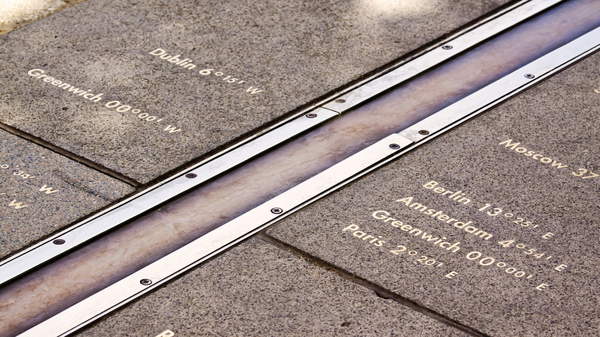Understanding UTC Offsets
As the universal reference point for all time zones, understanding UTC is the key to understanding the basis for civil time today.

The UTC offset is a means to define and express the local time within each time zone.
©iStockphoto.com/mevans
UTC, or Coordinated Universal Time, is a 24-hour global time standard used to determine time zones worldwide.
The local time in a time zone is defined by its offset (difference) from UTC.
How Does UTC Work?
UTC’s reference, or starting point, is the Prime Meridian running through Greenwich, London. This is the line marking 0 degrees longitude and the UTC offset +0.
The UTC offset is the difference in hours and minutes between UTC and the time at a particular place.
The offset indicates how many hours and minutes the local time is ahead (+) or behind (-) UTC. For example, UTC+1 means the local time is one hour ahead of UTC, while UTC-1 means the local time is one hour behind UTC.


The UTC offset is the difference in hours and minutes between UTC and the time at a particular place. Note that Daylight Saving Time is not included in this illustration. See the current status in our time zone map.
©timeanddate.com
Generally, time zones east of the United Kingdom are UTC+, and time zones west of the United Kingdom are UTC-.
For instance, New York, located west of UTC, is UTC-5 during standard time. And the standard time in Canberra, located east of UTC, is UTC+10.
Let’s break it down:
- UTC+1 indicates a time zone that is one hour ahead of—or later on the clock than—UTC. This means the local time in a UTC+10 time zone is ten hours ahead of UTC. For example, 12:00 UTC will be 22:00 (10 pm) in a location that observes UTC+10, like Canberra, Australia, during standard time.
- UTC-1 indicates a time zone that is one hour behind—or earlier on the clock than—UTC. This means the local time in a UTC-5 time zone is five hours behind UTC. For example, 12:00 UTC will be 07:00 (7 am) in a location that observes UTC-5, like New York in the USA, during standard time.
Changes Time Zone During DST
UTC remains constant throughout the year, unaffected by Daylight Saving Time. However, some countries switch to different time zones during their DST period.
This means that based on the time of year, the examples above—Canberra and New York—will be placed in different time zones depending on whether it’s DST season.
New York, for example, moves to Eastern Daylight Time, which is UTC-4, during DST. When the clocks are switched back one hour for standard time in the fall, New York returns to Eastern Standard Time and UTC-5.


Explanation of the different terms.
©timeanddate.com
More Than 24 UTC Offsets
While most time zones differ from UTC by full hours, a few have 30-minute and 45-minute offsets.
That’s why, even though UTC is based on a 24-hour model and always written in the 24-hour format, there are more than 24 UTC offsets.
The History of UTC
UT (Universal Time) was created in 1884, replacing Greenwich Mean Time (GMT) as the world’s time standard. In 1960, the International Radio Consultative Committee formalized the concept of UTC, and it was put into practice the year after. The name Coordinated Universal Time was officially adopted in 1967.

The Prime Meridian in London, England.
©iStockphoto.com/stocknshares
The reference line or starting point, the Prime Meridian, was determined to be the transit circle at the Royal Observatory in Greenwich, London.
This is why the United Kingdom uses a UTC +0 offset during standard time.
What About GMT?
Greenwich Mean Time (GMT) is often interchanged with UTC, leading to confusion.
No wonder, since it was previously the world’s time standard. Today, GMT is a time zone and UTC is the time standard.
GMT is the standard time zone in Greenwich. GMT is UTC+0, meaning it is equal to UTC.
The Difference Between UTC Offsets and Time Zones
A UTC offset and a time zone are related concepts but serve different purposes:
At timeanddate.com we define a time zone as a region where the same standard time is used. The UTC offset is a means to define and express the local time within each time zone.
Demystifying UTC
To sum up, UTC can be tricky to wrap our heads around. Hopefully, this article has shed some light on how UTC works and connects us globally.
Whether you’re scheduling international meetings or traveling across time zones, awareness of UTC enables you to deal effectively with time differences worldwide.